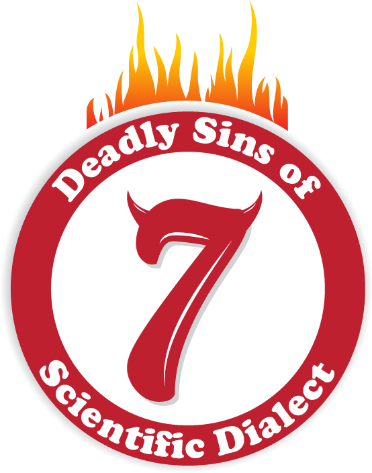Seven Deadly Sins Part 7

This series was written by Writing Tip Wednesday reader Rick Hull. Rick has been a health communications specialist with the National Center for Chronic Disease Prevention and Health Promotion’s (NCCDPHP’s) Office of the Director for 36 years, many of them as a writer-editor. He is NCCDPHP’s clearance coordinator and branding ambassador, CDC’s logo-licensing and co-branding coordinator, and a reviewer in CDC’s system logos clearance.
His favorite quote is “Great ideas are hogwash. Style and structure are the essence of great writing.” —Vladimir Nabokov, Lectures on Literature
This is the seventh Deadly Sin, but not the final one! WTW will be back after spring break with some bonus chapters.
Redundancy is the use of unnecessary words. Sentences, paragraphs, even entire sections of a paper can be redundant. It’s a funny thing, but as hard as it is to write, it’s harder still to write less than more. Paschal once apologized to a friend for having written “such a long letter. But I didn’t have time,” he said, “to write a short one.”
Example:
The sociodemographic characteristics of the linked population were compared to the nonlinked. In each instance, the characteristics were similar between the linked and nonlinked populations.
Revision:
The linked and nonlinked populations had similar demographic characteristics.
Example:
The usefulness of the different indicators is depicted in Table 4. The usefulness of the indicators can depend on whether the information is collected for the diagnosis of nutritional problems of individuals or for the diagnosis of nutritional problems of a population.
Revision:
The indicators’ usefulness can depend on whether the information is collected to diagnose nutritional problems of individuals or of a population (Table 4).
You should be aware that as you write, you may inadvertently re-explain something—perhaps because, having written more about it, you understand it better. If this is the case, you should just choose the better explanation and delete the other.
In scientific writing, redundancy often occurs across the IMRD structure (Intro, Methods, Results, Discussion). Authors repeat in their methods something said in their introduction, and in their results something they’ve explained in their methods. Most often, the discussion repeats something they’ve presented in their results. The discussion section is the most susceptible to redundancy because of the temptation to repeat (in full detail) each result you’re going to discuss. Try merely alluding to the result—that will probably be enough for a reader to recall it. If you need to discuss a complicated result, try restating it with a twist. For instance, convert a straightforward percentage comparison into a “twice as great” expression.